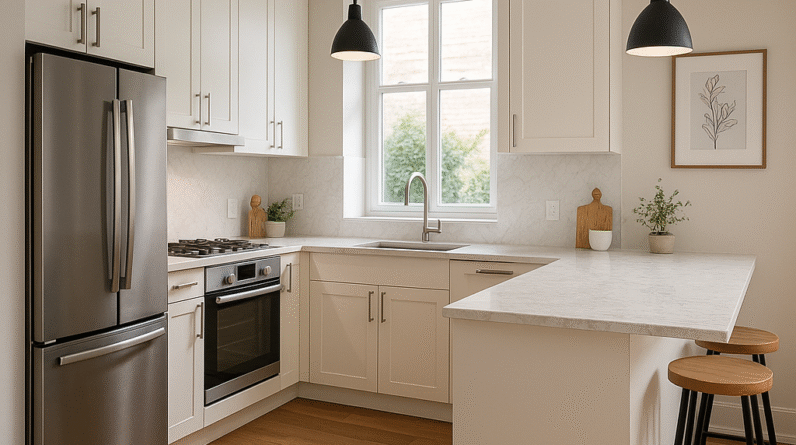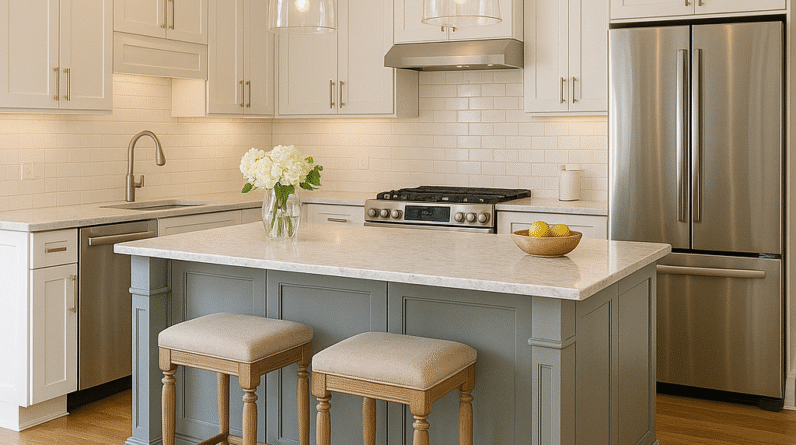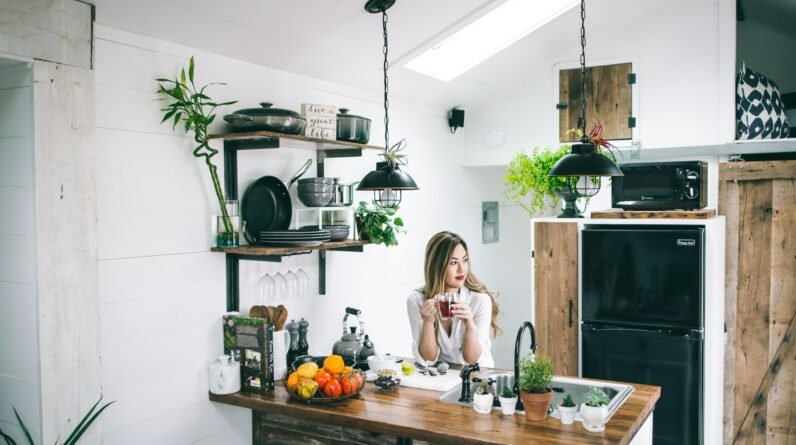
What Is Wet Kitchen? – How To Use It
What Is Wet Kitchen? Imagine walking into a friend’s house and noticing a separate area designated as the “wet kitchen.” Curiosity piques, and you wonder, what exactly is a wet kitchen? In this article, we will uncover the meaning and purpose behind this unique kitchen concept. Whether you’re a cooking enthusiast or simply intrigued by different culinary traditions, join us as we explore the fascinating realm of wet kitchens and discover how they contribute to a well-rounded home cooking experience.

Definition of Wet Kitchen
Explanation of Wet Kitchen
A wet kitchen refers to the area in a home or a commercial space that is specifically designated for cooking purposes. It is called a “wet” kitchen because it involves the use of water for various cooking and cleaning activities. This area is typically separated from other living spaces and is equipped with appliances, countertops, cabinets, and a sink for food preparation and cleaning.
Different Terminologies Used for Wet Kitchen
In different regions and cultures, the wet kitchen is also known by various names, such as “dirty kitchen” in the Philippines, “service kitchen” in the United States, or “back kitchen” in the United Kingdom. Regardless of the name, the purpose of the wet kitchen remains the same – to provide a dedicated space for all cooking-related activities.
Key Features of Wet Kitchen
A wet kitchen typically has several key features that distinguish it from other areas in a home or a commercial space. These features include:
- Sink and Faucet: The presence of a sink and faucet is one of the most prominent features of a wet kitchen. It allows for convenient access to water for tasks like washing vegetables, rinsing dishes, and cleaning utensils.
- Countertops and Cabinets: The wet kitchen is equipped with countertops and cabinets to provide ample workspace and storage for kitchen utensils, appliances, and ingredients.
- Cooking Appliances: Various cooking appliances, such as stovetops, ovens, and grills, are an essential part of a wet kitchen. These appliances allow for efficient and safe food preparation.
- Durable Flooring and Wall Coverings: Due to the nature of activities involved in a wet kitchen, the flooring and wall coverings are chosen to be durable and resistant to water, heat, and stains.
Importance of Wet Kitchen
Enhances Cooking Experience
Having a dedicated wet kitchen significantly enhances the overall cooking experience. With a well-designed wet kitchen, you have all the necessary tools and equipment within reach, making it easier and more enjoyable to prepare meals. The layout and functionality of the wet kitchen ensure that you can efficiently move around and work without any hindrances.
Promotes Better Hygiene
A wet kitchen promotes better hygiene as it provides a separate and controlled area for food preparation and cleaning. By having a designated space for these activities, you can minimize the risk of cross-contamination and the spread of bacteria. Furthermore, the presence of a sink and faucet allows for easy handwashing during food preparation, ensuring cleanliness and reducing the chances of foodborne illnesses.
Allows for Efficient Cleaning and Maintenance
The design and layout of a wet kitchen play a crucial role in ensuring its cleanliness and ease of maintenance. With appropriate materials and finishes, such as waterproof flooring and stain-resistant countertops, cleaning up spills and messes becomes hassle-free. Additionally, having a dedicated space for cooking allows for better organization and makes it easier to keep the kitchen tidy and clutter-free.
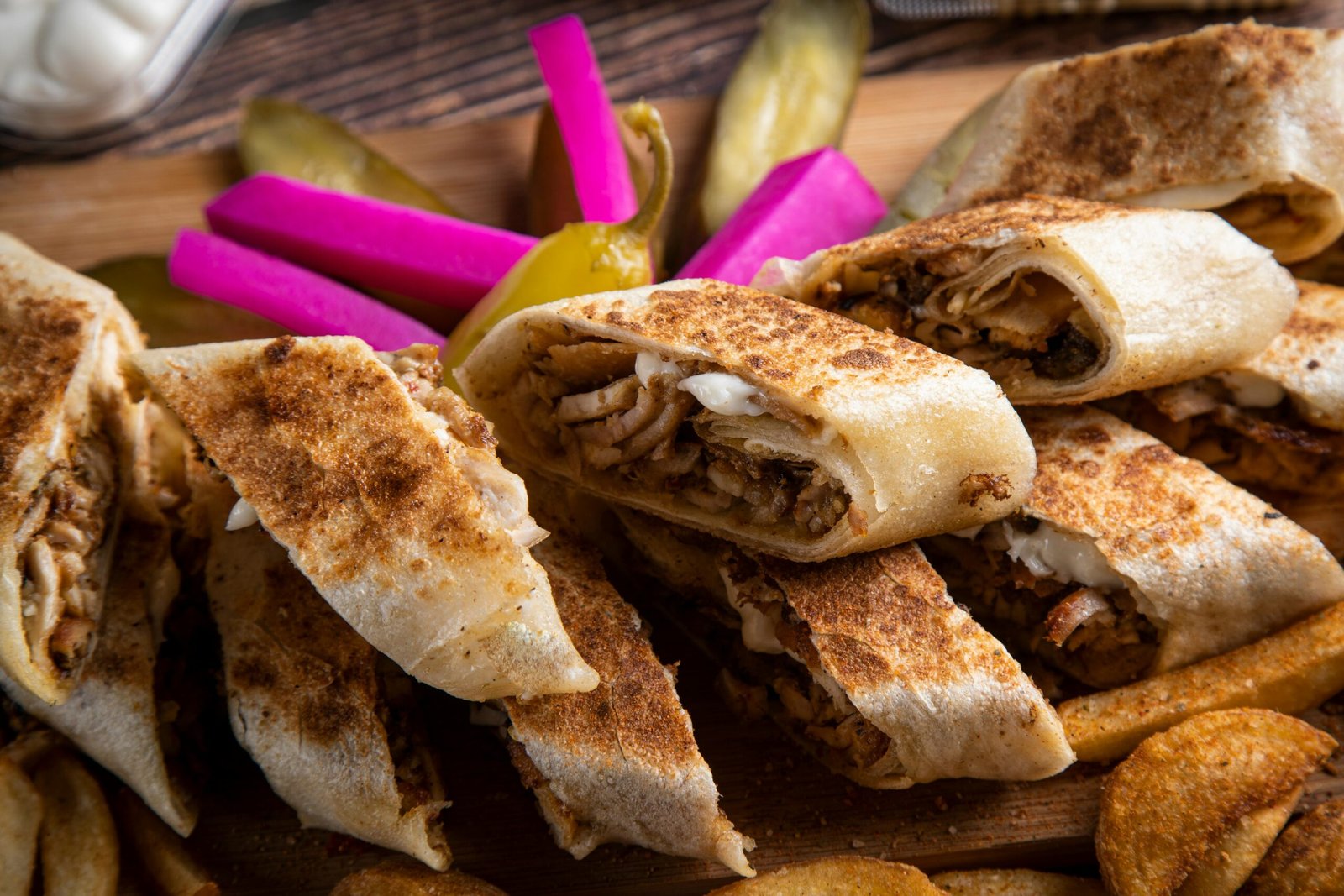
Design Considerations for Wet Kitchen
Layout and Space Planning
When designing a wet kitchen, it is important to consider the layout and space planning to ensure optimal functionality and efficiency. The layout should incorporate a practical workflow, commonly known as the work triangle, which connects the sink, refrigerator, and cooking area. This allows for easy movement between these key zones and minimizes unnecessary steps during food preparation.
Selection of Materials and Finishes
Choosing the right materials and finishes is crucial for a wet kitchen since it is exposed to water, heat, and constant use. Waterproof and heat-resistant materials, such as stainless steel, stone, or tile, are ideal for countertops and backsplashes. Similarly, durable and easy-to-clean flooring options, like ceramic tiles or vinyl, should be considered.
Adequate lighting and ventilation are essential aspects of a well-designed wet kitchen. Proper lighting ensures that you have sufficient visibility while working, especially during food preparation. Natural light sources, such as windows or skylights, can be beneficial. Additionally, a reliable ventilation system, which includes an exhaust hood or ventilation fan, helps to eliminate cooking odors, moisture, and pollutants from the kitchen.
Functional Components of a Wet Kitchen
Sink and Faucet
The sink and faucet are indispensable components of a wet kitchen. They facilitate tasks such as washing fruits and vegetables, rinsing dishes and utensils, and cleaning cooking equipment. When choosing a sink, consider factors such as size, material, and configuration to ensure it suits your needs and preferences. A high-quality faucet with features like adjustable sprays and temperature control adds convenience to your cooking experience.
Countertops and Cabinets
Countertops and cabinets provide essential workspace and storage in a wet kitchen. When selecting countertops, opt for materials that are resistant to water, heat, and staining. Granite, quartz, or solid surface countertops are popular choices due to their durability and aesthetic appeal. Cabinets should be well-designed to maximize storage space and allow for easy access to cookware, utensils, and ingredients.
Cooking Appliances
Cooking appliances are central to the functionality of a wet kitchen. They include stovetops, ranges, ovens, microwaves, and other cooking equipment. Depending on your cooking preferences and needs, choose appliances that suit your requirements in terms of size, functionality, and energy efficiency.
Storage Solutions
A wet kitchen should have efficient storage solutions to keep the space organized and clutter-free. Consider incorporating features like pull-out drawers, vertical storage racks, and adjustable shelving to make the most of the available space. Proper organization ensures easy access to ingredients, utensils, and appliances, making the cooking process more seamless.
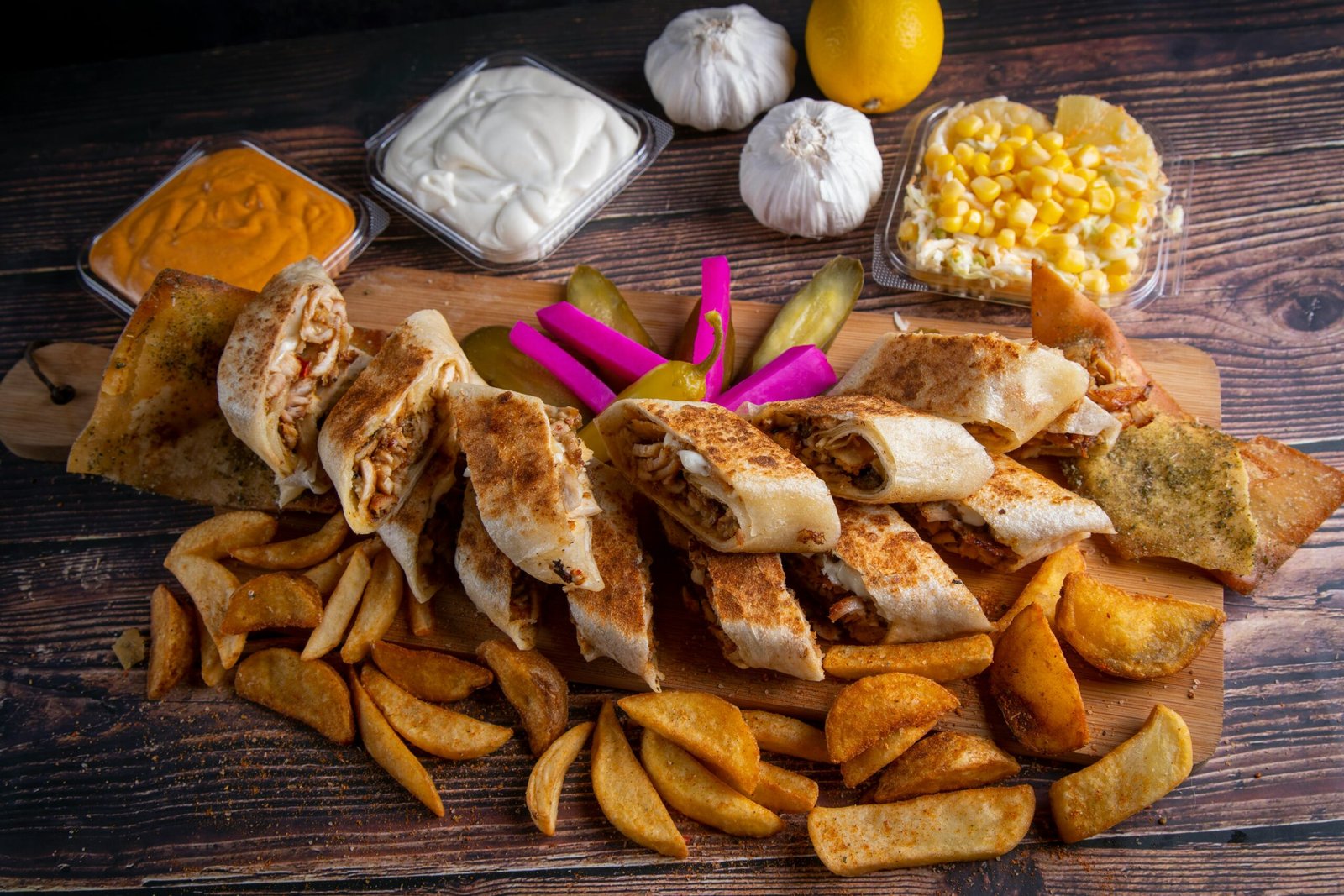
Benefits of Having a Wet Kitchen
Separation of Cooking Activities
One of the significant benefits of having a wet kitchen is the separation of cooking activities from other living spaces. This separation helps in containing food odors, grease, smoke, and any potential messes within the kitchen boundaries. It allows for a cleaner and more pleasant environment in the rest of the home, reducing the need for constant ventilation and deep cleaning in other areas.
Enhanced Safety Measures
A wet kitchen provides enhanced safety measures compared to cooking in non-designated areas. With proper ventilation systems, the kitchen can effectively remove smoke, steam, and cooking fumes, which can be harmful if not adequately ventilated. Additionally, the layout and design of a wet kitchen can minimize the risk of accidents and injuries, resulting in a safer cooking environment.
Flexibility in Kitchen Design
Having a dedicated wet kitchen provides flexibility in overall kitchen design. As the wet kitchen is a separate space, it allows for different design styles and preferences without affecting the aesthetics and functionality of the rest of the home. Whether you prefer a traditional, modern, or open-concept kitchen, the wet kitchen can be tailored to your specific needs and taste.
Difference between Wet Kitchen and Dry Kitchen
Definition of Dry Kitchen
A dry kitchen, also known as a pantry kitchen or a secondary kitchen, refers to an area in a home or a commercial space that is specifically designed for storage and food preparation activities that do not involve water. It typically contains cabinets, shelves, and countertop space for organizing and preparing dry ingredients, snacks, and beverages.
Key Differences in Functionality and Design
The primary difference between a wet kitchen and a dry kitchen lies in their functionality and design. In a wet kitchen, water-based cooking activities, cleaning, and washing take place, whereas a dry kitchen is focused on storage and preparation of non-water-based items. Wet kitchens are equipped with sinks, faucets, and cooking appliances, while dry kitchens primarily feature storage solutions like cabinets and shelves.
Tips for Maintaining a Wet Kitchen
Regular Cleaning and Inspection
To maintain a clean and hygienic wet kitchen, regular cleaning and inspection are essential. This includes wiping down countertops and surfaces after each use, sweeping or mopping the floor, and cleaning the sink and faucet regularly. Additionally, inspect and clean cooking appliances, vent hoods, and exhaust fans to prevent the buildup of grease and dust.
Proper Disposal of Grease and Waste
Proper disposal of grease and waste is crucial to prevent clogged drains and unpleasant odors in a wet kitchen. Avoid pouring grease down the sink, as it can solidify and cause blockages. Instead, collect it in a heat-resistant container, and dispose of it properly. Regularly empty trash bins and compost organic waste to maintain cleanliness and prevent the attraction of pests.
Managing Plumbing and Water Drainage
Ensure that the plumbing and water drainage systems in your wet kitchen are functioning properly. Regularly check for leaks, drips, or any other plumbing issues. Keep drains clear by using a drain cleaner periodically to prevent buildup and clogs. Proper maintenance of the plumbing system will help prevent water damage, mold growth, and other potential issues.
Common Mistakes to Avoid in Wet Kitchen Design
Insufficient Storage Space
One common mistake in wet kitchen design is not having enough storage space. Insufficient storage can lead to a cluttered and disorganized kitchen, making it difficult to work efficiently. Properly assess your storage needs and incorporate enough cabinets, shelves, and drawers to accommodate all your cookware, utensils, and ingredients.
Inadequate Ventilation
Lack of adequate ventilation is another common mistake to avoid in wet kitchen design. A well-ventilated kitchen helps to remove cooking odors, moisture, and indoor air pollutants. Install an exhaust hood or ventilation fan that is suitable for the size and layout of your wet kitchen. Proper ventilation not only improves air quality but also prevents the accumulation of heat and condensation.
Poor Layout Planning
A poorly planned layout can hinder the functionality and efficiency of a wet kitchen. Avoid common layout mistakes, such as placing the sink too far from the cooking area or having limited counter space. Carefully consider the work triangle concept and ensure that the layout allows for easy movement and accessibility between the sink, cooking area, and refrigerator. Adequate counter space for food preparation and clear pathways are vital for a well-designed wet kitchen.
Wet Kitchen Safety Precautions
Fire Safety Measures
Fire safety measures are crucial in a wet kitchen to prevent accidents and ensure the safety of both the occupants and the property. Install a fire extinguisher within reach and make sure it is inspected regularly. Keep flammable materials away from heat sources, and always monitor the stovetop while cooking. Avoid wearing loose clothing that can catch fire and practice proper fire safety procedures in case of emergencies.
Electrical Safety Guidelines
Electrical safety is of utmost importance in a wet kitchen due to the presence of water and electrical appliances. Ensure that all electrical outlets and switches are positioned away from water sources and in compliance with safety codes. Use ground fault circuit interrupters (GFCIs) to provide protection against electrical shock. Regularly inspect cords, plugs, and appliances for any signs of damage or wear and promptly address any issues.
Preventing Slips and Falls
Slips and falls can be common in wet kitchen environments due to water spills and wet surfaces. To prevent accidents, choose slip-resistant flooring materials and keep the floor dry as much as possible. Place mats or rugs with non-slip backings near the sink and other areas prone to moisture. Clean up spills immediately to minimize the risk of slipping and ensure the safety of everyone using the wet kitchen.
Examples of Wet Kitchen Designs
Traditional Wet Kitchen Design
In a traditional wet kitchen design, emphasis is placed on functional elements and features. It often includes natural materials like wood and stone, creating a warm and inviting atmosphere. The layout typically follows a work triangle concept, ensuring efficient movement and workflow. Traditional wet kitchens often incorporate ornate detailing, decorative tiles, and ample storage space to maintain a classic and timeless look.
Modern and Contemporary Wet Kitchen Design
Modern and contemporary wet kitchen designs focus on clean lines, minimalism, and sleek finishes. They often utilize materials like stainless steel, glass, and concrete to create a sense of sophistication and simplicity. These designs prioritize functionality and efficiency, with an emphasis on integrated appliances, hidden storage solutions, and high-tech features. The color palette is generally neutral and muted, allowing for a clean and uncluttered aesthetic.
Open Concept Wet Kitchen Design
Open concept wet kitchen designs have gained popularity in recent years, especially in homes with limited space. This design approach blends the wet kitchen seamlessly with the adjacent living areas, creating a sense of openness and connectivity. The layout often incorporates a kitchen island or a breakfast bar, providing additional workspace and serving as a social gathering spot. Open concept wet kitchens prioritize natural light and flow, creating a modern and welcoming atmosphere.
In conclusion, a wet kitchen is an essential and valuable component of any home or commercial space. It enhances the cooking experience, promotes better hygiene, and allows for efficient cleaning and maintenance. The design considerations, functional components, and safety precautions discussed herein should be taken into account when planning and designing a wet kitchen to ensure optimal functionality, aesthetics, and safety. Whether you opt for a traditional, modern, or open concept design, a well-designed wet kitchen will undoubtedly enhance your culinary endeavors and contribute to a pleasant and efficient cooking environment.

